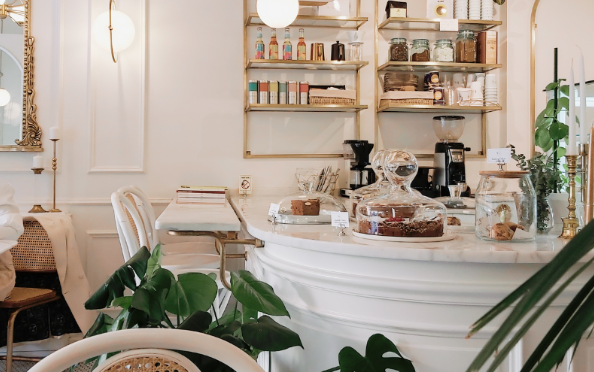A café’s success depends on various factors, but the debate over whether the menu holds greater significance than food in interior design remains a critical discussion. While high-quality ingredients and skilful preparation are essential, the way a space is designed shapes customer experience influences their perception of the menu, and ultimately impacts business performance. The collaboration between a commercial interior designer and a café owner can determine how effectively the environment aligns with the menu’s concept. The question then arises—should more emphasis be placed on the menu itself, or does the design of the space play a more crucial role in a café’s identity and success?
The Role of Interior Design in Café Identity
A well-designed café creates a sense of atmosphere that enhances the way customers interact with the menu. The space should reflect the establishment’s concept, ensuring everything, from lighting to seating arrangements, complements the culinary offerings. A commercial interior design consultant evaluates these factors to ensure cohesion between food presentation and the overall ambience.
An interior designer for a café takes into account the target demographic and their expectations when planning a layout. A space catering to young professionals may embrace minimalistic aesthetics with functional workspaces, while a café focused on artisanal baking might feature rustic elements that align with its handcrafted approach. The role of a café interior designer extends beyond aesthetics, integrating practical solutions such as circulation flow and spatial organisation to improve customer satisfaction.
A well-thought-out design fosters brand recognition. Even before a customer looks at the menu, they absorb the setting, which influences their expectations of the food and drink selection. A carefully curated environment can make a café feel inviting, inspiring longer stays and repeat visits. This strategic approach makes the interior just as influential as the menu itself.
How Menus Influence Customer Perception
While the physical environment sets the stage, the menu acts as the script, defining the experience through its selections. The way dishes are described, structured, and priced affects customer choices and expectations. A commercial interior designer takes these factors into account, ensuring that the menu presentation aligns with the café’s visual appeal.
The placement of menu boards, the typography used, and even the material of printed menus influence how customers engage with the offerings. A sophisticated, fine-dining café may opt for elegant, well-crafted menus with intricate descriptions, while a relaxed, street-food-inspired café may embrace bold fonts and informal language. The strategic integration of menu design within the space ensures consistency, reinforcing the brand’s identity.
A commercial interior design consultant often collaborates with graphic designers to create menus that visually and thematically align with the space. This approach ensures that the transition from the physical environment to the menu is seamless, preventing any disconnect that might disrupt the customer experience. A well-integrated menu enhances decision-making, allowing customers to navigate selections effortlessly while maintaining engagement with the space.
Balancing the Menu and Interior Design for Business Success
Although food quality remains fundamental, customers often associate their experience with the environment rather than the dishes alone. A café interior designer focuses on creating an atmosphere that supports the menu, using spatial planning, materials, and décor to highlight the unique aspects of the cuisine.
The interplay between the menu and design is especially crucial in themed cafés, where the surroundings amplify the storytelling element of the dining experience. A vintage-inspired café serving traditional pastries benefits from warm, nostalgic aesthetics, reinforcing the authenticity of the menu. In contrast, a modern, health-focused establishment may incorporate sleek, natural elements to reflect fresh ingredients and innovative recipes.
Lighting, acoustics, and furniture choices also contribute to how customers perceive food and drink. A commercial interior design consultant ensures that these elements do not overshadow the menu but enhance it. Customers are more likely to enjoy their meals when they feel comfortable and engaged with their surroundings. A well-designed interior establishes a lasting impression, encouraging positive reviews and increased foot traffic.
The relationship between menu and interior design is interdependent rather than hierarchical. While the menu dictates the culinary experience, interior design shapes the way customers perceive and engage with it. A café interior designer plays a crucial role in bridging these elements, ensuring that the environment enhances the menu’s appeal rather than distracting from it. The most successful cafés achieve a seamless balance, where design and food harmonise to create an immersive experience that encourages customer loyalty.
Are you looking for a way to refine your café’s interior to complement your menu? Contact Interea today and let our expert designers create a space that enhances your brand’s identity and customer experience.

